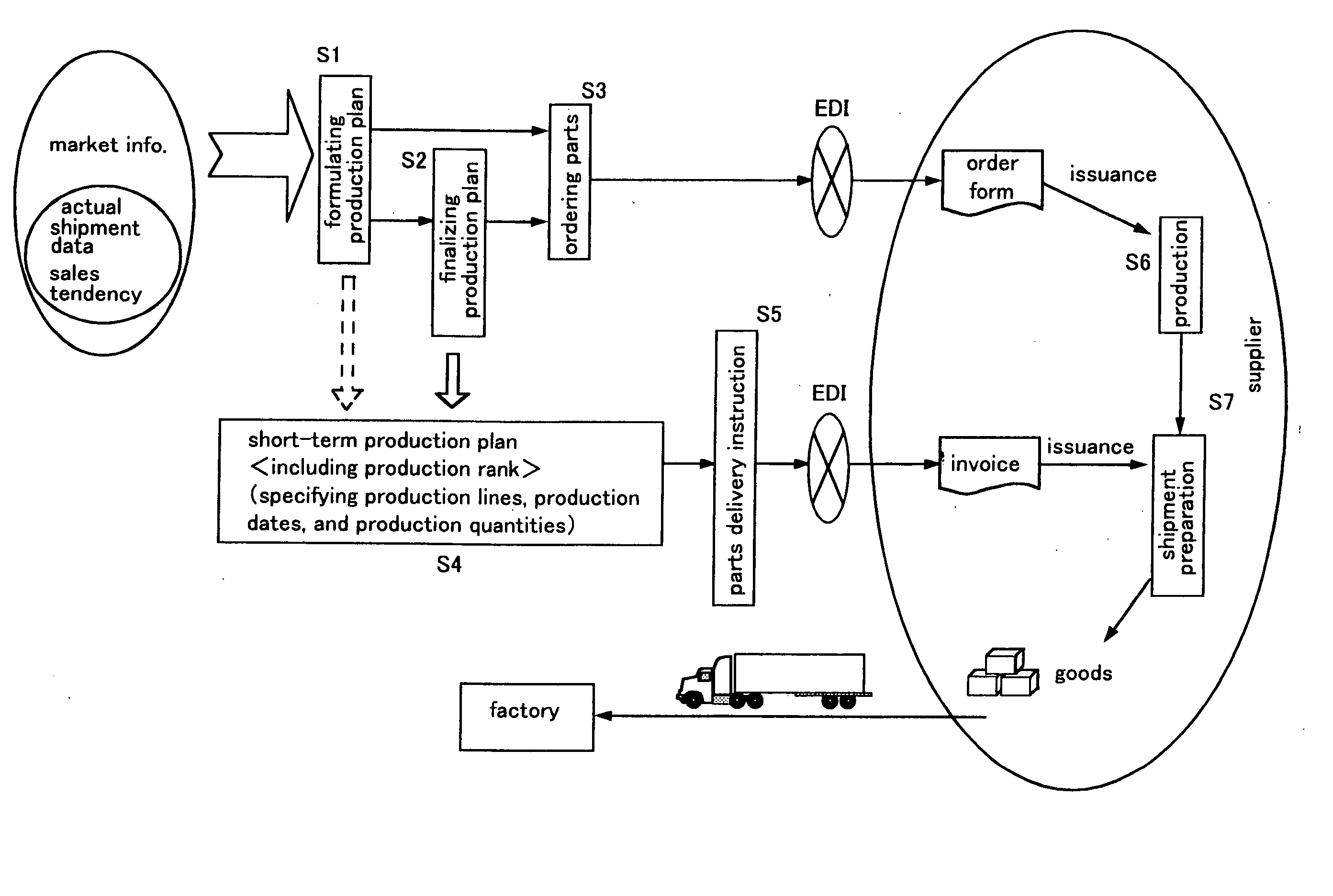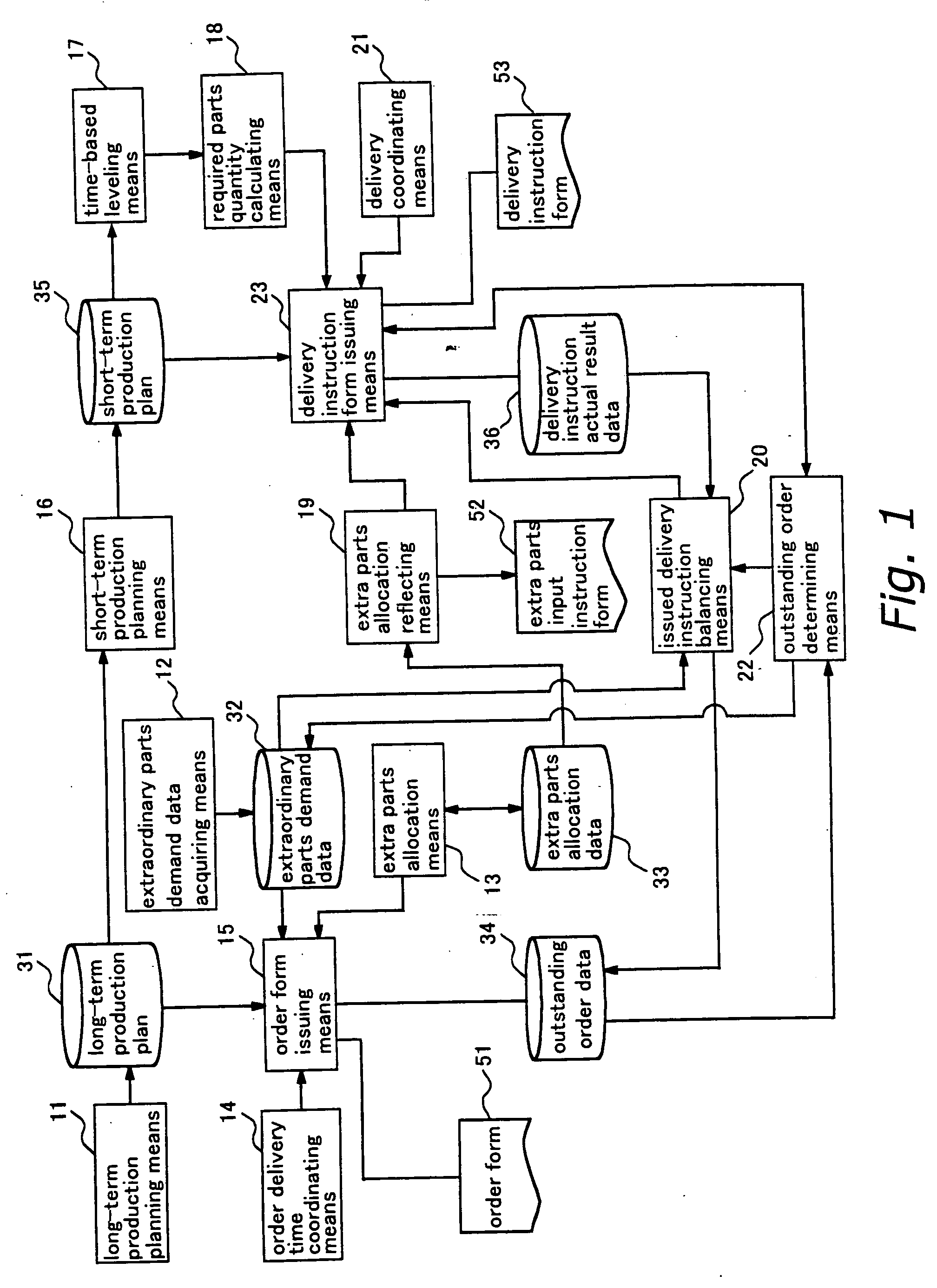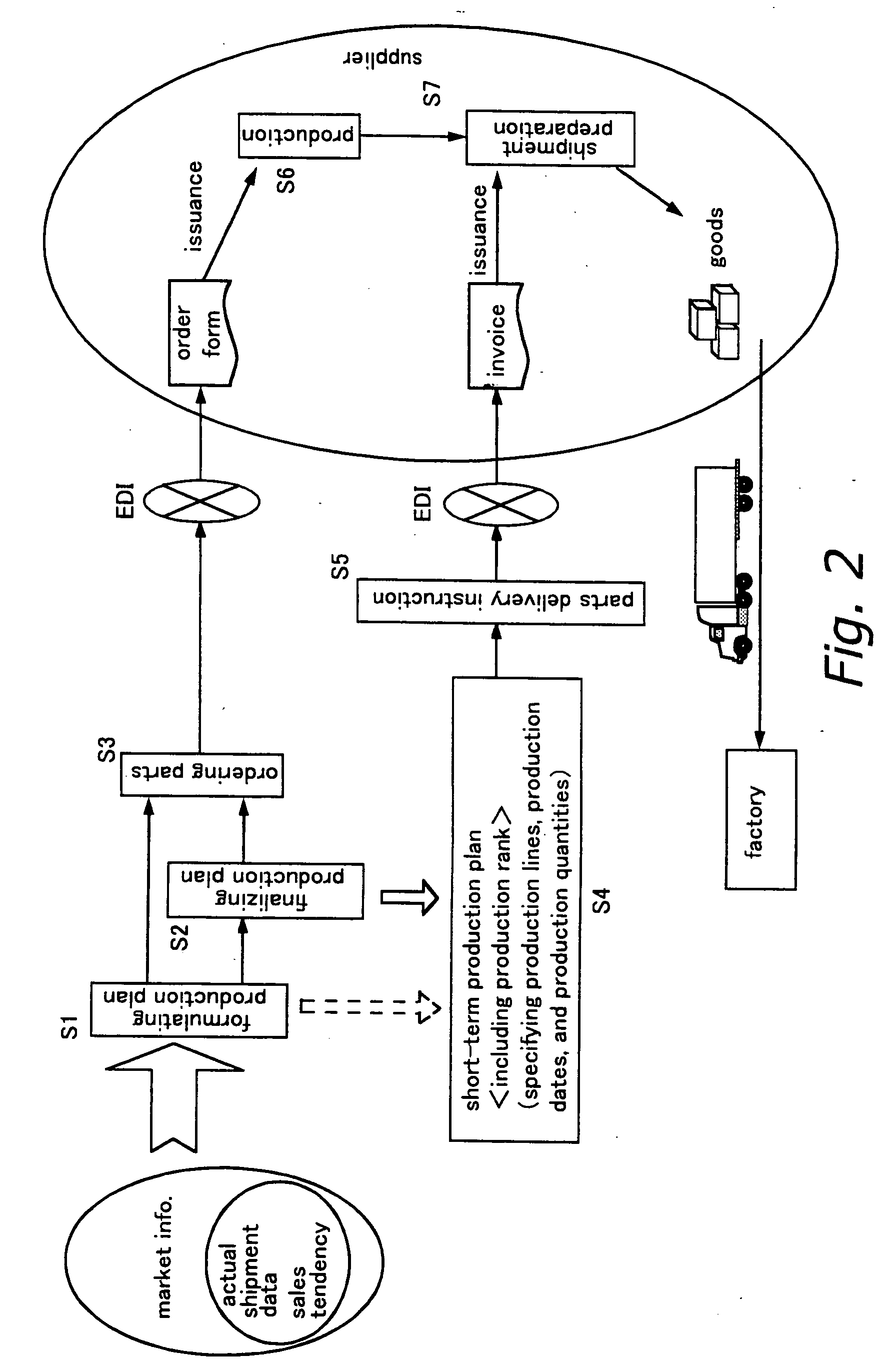Parts procurement method and apparatus
- Summary
- Abstract
- Description
- Claims
- Application Information
AI Technical Summary
Benefits of technology
Problems solved by technology
Method used
Image
Examples
Embodiment Construction
[0086] Outline of the Configuration
[0087] A control block diagram showing an outline of the configuration of the present invention is presented in FIG. 1.
[0088] A long-term production planning means 11 sets a predetermined time period and determines a planned production quantity of a product to be produced in the predetermined time period. For example, a production plan is formulated by determining the production quantity on each operating day in a production line in the range of from 6 months up to 1 year. The formulated production plan may be configured such that the plan is reviewed at a given periodic cycle (for example, every week). In the case of reviewing the plan each week, the production plan may be reviewed so that the planned production quantity to be attained for the week after the next is reviewed on the weekend, and if the production line is active on Monday to Friday, the planned production quantities for these 5 days are planned to calculate the total of the planned ...
PUM
 Login to View More
Login to View More Abstract
Description
Claims
Application Information
 Login to View More
Login to View More - R&D
- Intellectual Property
- Life Sciences
- Materials
- Tech Scout
- Unparalleled Data Quality
- Higher Quality Content
- 60% Fewer Hallucinations
Browse by: Latest US Patents, China's latest patents, Technical Efficacy Thesaurus, Application Domain, Technology Topic, Popular Technical Reports.
© 2025 PatSnap. All rights reserved.Legal|Privacy policy|Modern Slavery Act Transparency Statement|Sitemap|About US| Contact US: help@patsnap.com



